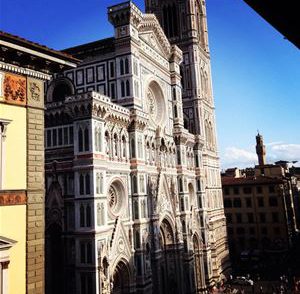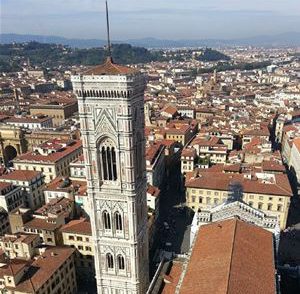Lady Chatterley’s Lover, D.H. Lawrence’s unconventionally scandalous tale of sex and debauchery, rocked the English prudery boat so much that it was not legally allowed in the country until 1960, some 30 years after the author’s death. The novel, which charts the story of Constance Chatterley, who is caught between sexual desire for one man and love for another, remains renowned for its pioneering rejection of Victorian social expectations. What is not so widely known, however, is that Lawrence in fact wrote the first draft of his infamous book not far from Florence, between 1926 and 1927. Here, sitting outdoors in the quiet tranquillity of his Tuscan refuge, he penned some of the most notorious words in early twentieth-century literature.

Using a short description that Lawrence wrote in his journal, the curious can try to locate the place where the Nottinghamshire-born writer shaped the scandalous novel: ‘Catch the tram to Scandicci and get off at the last stop at Ponte Vingone. Continue on foot, walk past the “pagoda” house and then turn left towards San Polo at the crossroads with two cypress trees. The road then goes downhill and you can already see Villa Mirenda on the hill opposite.’ (Obviously, Lawrence’s tram is not the same system that Florence has today!)
With the help of Florentine bookseller Pino Orioli, Lawrence was able to track down a little-known publishing house, La Giuntina, which finally accepted his manuscript in full knowledge that it would probably end up being banned. The publishers’ complete lack of English meant that this earliest manuscript was full of mistakes, whilst also conveniently shielding their Italian eyes from its indecencies. Urban legend has it that, on hearing a description of the contents of the book, the publisher remarked, ‘Oh, but this is not something we do every day!’

Against all odds, however, copies slowly started to leak out of Italy, reaching English and American booksellers, who were daring enough to sell them under the counter. Many of these were confiscated before even being delivered, judged inappropriate on the basis of the book not being ‘suitable to be read by a 14-year-old schoolgirl,’ which was the benchmark for a publishable novel at the time. Lawrence remained undeterred: instead he simply began to disguise his book with alternative jackets and title pages. However, he was unable to prevent the medley of reviews that accompanied the book’s arrival, including one written by author and journalist Herbert J. Seligmann, who labelled the book ‘daring beyond all description.’ Another reviewer called it ‘so absolutely improper, and so really good.’ The ‘purple passages’ for which the novel attracted so much infamy became its hallmarks of success.
When it was first published, the novel precipitated an obscenity trial, which remains revolutionary in literary history for its progression of the written word. The acquittal was a triumph for sexual liberation and literary freedom. Its social impact was equally profound: within a few years, the strict censorship laws imposed by Lord Chamberlain on theatre were revoked, paving the way for an unflinchingly tenacious influx of British cinema and drama. Laws on homosexuality, abortion and divorce were reconsidered and relaxed; England lurched quite suddenly into a new modern age. So how is it that Italy pre-empted this liberation when a Florentine man so complacently agreed to publish such a scandalous tale?

Lawrence might say that the answer lies in its people. As Lawrence said of Italy, ‘That is why I like to live in Italy. The people are so unconscious. They only feel and want: they don’t know. We [the English] know too much. No, we only think we know such a lot.’







